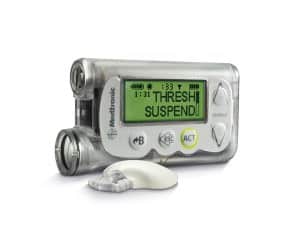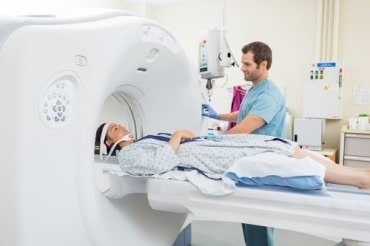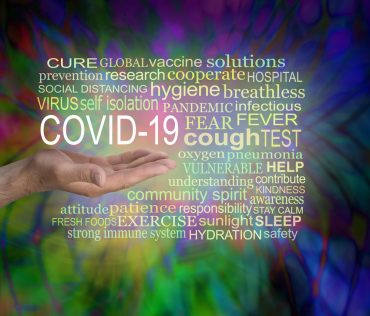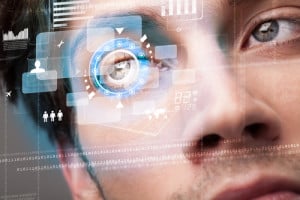
Predictive maintenance isn’t just for machines. The Internet of Things is set to revolutionize the health-care industry in many ways, such as real-time alerts for health emergencies, implantable devices that administer medicine, and drones that dispatch health care to remote areas.
In manufacturing, companies can now predict when something—a machine, component or product—is going to break down, and fix it before it does. Being able to predict, with a high degree of certainty, when a unit will need service can prevent delays and save money.
Predictive maintenance is possible largely because of the Internet of Things. Manufacturers can collect “condition data” from sensors on machinery and products within the production operation, as well as on products in use in the field post-production. Then they continuously analyze the data against parameters such as how machines should be calibrated, or upper and lower quality-control limits, to understand any deviations in real time.
What if we could apply the same techniques to humans to help prevent illness or save lives? The Internet of Things has gone beyond the hype and is now gaining credibility well beyond smart fridges. The next step is in connecting smart gadgets and wearable devices to the technology infrastructure of hospitals or doctor’s offices, which would enable a kind of predictive maintenance for humans, or predictive health care.
For example, wearable technology such as an Apple Watch monitors your heart rate and the output data could be connected to your hospital’s systems. An algorithm could detect a pattern that indicates you are about to have a heart attack; then the hospital’s systems would alert you through a text message or phone call to tell you to strap on your defibrillator vest. An ambulance would be called to your home and the hospital would be alerted to have a cardiologist standing by. This is truly using streaming, real-time, mobile data for predictive health care.
IoT sensors can even be embedded inside the body. The visionary medical technology solutions company, Medtronic, has been involved in creating an “artificial pancreas.” This is an example of IoT taking place inside the body with implanted sensors that analyze your blood and communicate with an implanted pump device that can administer the correct dose of insulin. This kind of closed-loop application can potentially revolutionize the lives of patients who suffer from some loss of organ function–in this case, people with Type 1 diabetes.
Deep Learning, Drones
Patient data from IoT sensors could also benefit others if it is collated and analyzed in “deep learning” algorithms. For example, an algo could look at 5,000 photos of skin lesions and “learn” which ones indicate skin cancer. That way, using an app, you could take a photo of a worrying mole on your skin; an algo then compares your photo to its database. If it looks likely to be skin cancer, the app could alert your dermatologist’s office which would then call you to make an appointment.
This kind of diagnostic application could be very useful in parts of the world where medical care and expertise are scarce. If patients do not have to travel tens or hundreds of miles to receive a diagnosis, more can be treated. Drones could deliver emergency medicines for those with treatable diseases.
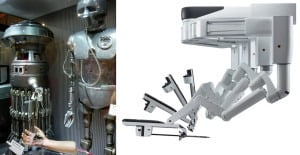
At left, Star Wars medical droids. At right, Intuitive Surgical’s da Vinci Xi system. (Credit: Left: Jessica Spengler; right: Intuitive Surgical).
Drones are the ultimate IoT tools; they not only monitor conditions and report them back to HQ, they also can provide the solution to the problem. For example, the use of drones in war-torn areas could save lives. If drones were programmed to seek out injured soldiers, they could scan and diagnose their injuries and feed these to nearby hospitals and ambulance services. If there are no medical facilities nearby, drones could be equipped with connections to remote doctors who can show medics on the ground how to perform surgery on the injured person. They could even deliver a robot surgeon that is controlled by remote doctors.
Drones are already used in agriculture to monitor crop conditions, weather, and field animals. But what if they could spot a cow in distress in a herd and alert the farmer or call a vet automatically? Animal lives could also be saved!
Still, humans are probably most interested in the use of IoT to save or prolong life. Wearable, implantable technology—along with drones—is going to revolutionize healthcare, moving closer to a model in which IoT sensors monitor your health continuously. This reduces the number of expensive and unnecessary clinic visits, saves patients and hospitals money, and can save lives.
The concept of immortality has fascinated humans through the ages. Through the use of the Internet’s “Things” and streaming analytics we may achieve a step in the right direction by vastly extending life, as we continuously predict and fix health problems and augment the body with smart systems. Extending life is not without its own issues, of course, such as how to fit a longer-living population on Earth. We may have to speed up colonizing other planets!
Want more? Check out our most-read content:
Goodbye Don Draper, Hello Big Data: An EMA Report on Modern Analytics
Research from Gartner: Real-Time Analytics with the Internet of Things
Becoming an ‘Always On’ Smart Business
Webinar Replay: Better Business Insight with Real-Time Streaming Analysis
Liked this article? Share it with your colleagues using the links below!



